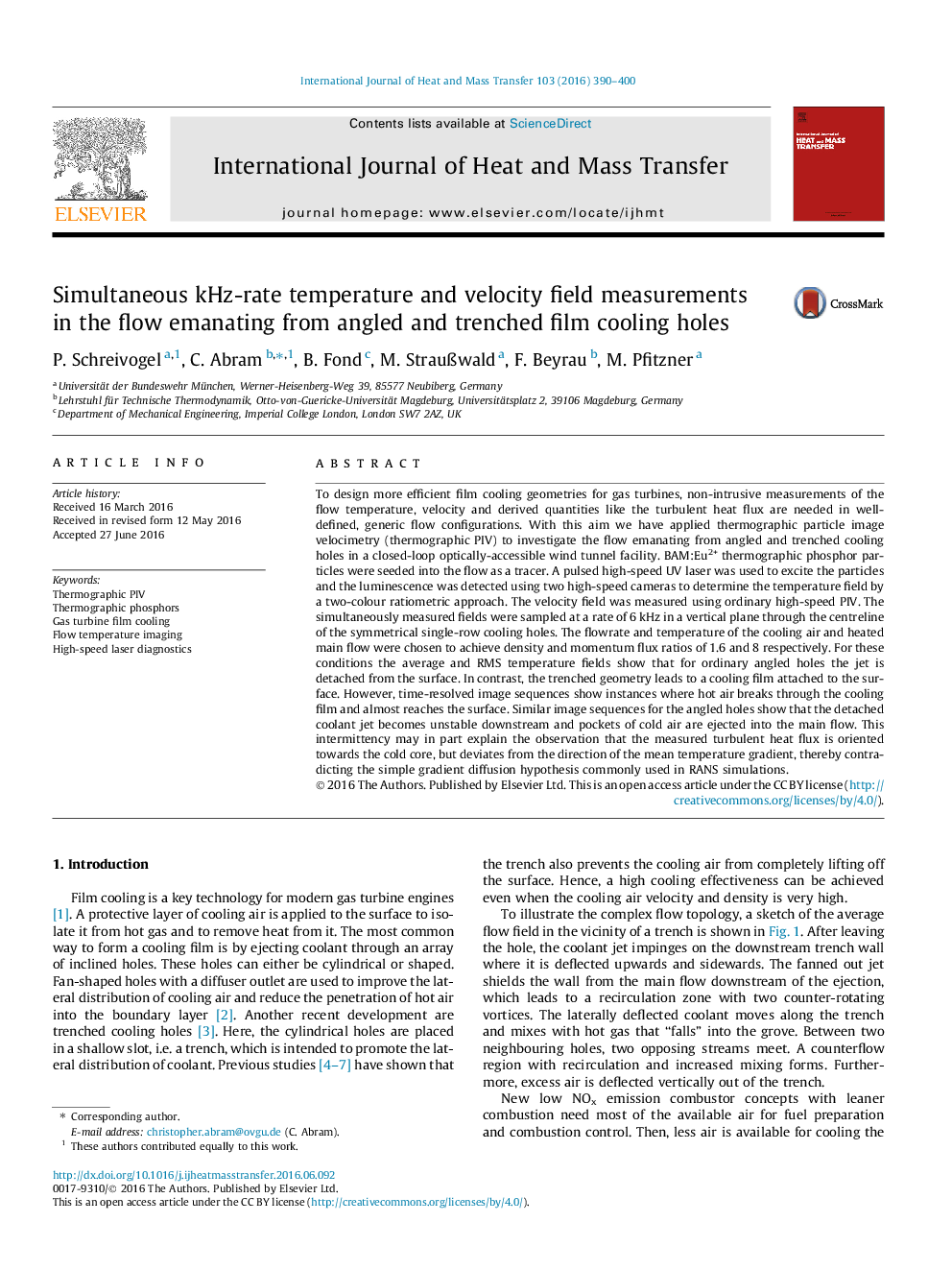| کد مقاله | کد نشریه | سال انتشار | مقاله انگلیسی | نسخه تمام متن |
|---|---|---|---|---|
| 7055070 | 1458039 | 2016 | 11 صفحه PDF | دانلود رایگان |
عنوان انگلیسی مقاله ISI
Simultaneous kHz-rate temperature and velocity field measurements in the flow emanating from angled and trenched film cooling holes
دانلود مقاله + سفارش ترجمه
دانلود مقاله ISI انگلیسی
رایگان برای ایرانیان
کلمات کلیدی
موضوعات مرتبط
مهندسی و علوم پایه
مهندسی شیمی
جریان سیال و فرایندهای انتقال
پیش نمایش صفحه اول مقاله

چکیده انگلیسی
To design more efficient film cooling geometries for gas turbines, non-intrusive measurements of the flow temperature, velocity and derived quantities like the turbulent heat flux are needed in well-defined, generic flow configurations. With this aim we have applied thermographic particle image velocimetry (thermographic PIV) to investigate the flow emanating from angled and trenched cooling holes in a closed-loop optically-accessible wind tunnel facility. BAM:Eu2+ thermographic phosphor particles were seeded into the flow as a tracer. A pulsed high-speed UV laser was used to excite the particles and the luminescence was detected using two high-speed cameras to determine the temperature field by a two-colour ratiometric approach. The velocity field was measured using ordinary high-speed PIV. The simultaneously measured fields were sampled at a rate of 6Â kHz in a vertical plane through the centreline of the symmetrical single-row cooling holes. The flowrate and temperature of the cooling air and heated main flow were chosen to achieve density and momentum flux ratios of 1.6 and 8 respectively. For these conditions the average and RMS temperature fields show that for ordinary angled holes the jet is detached from the surface. In contrast, the trenched geometry leads to a cooling film attached to the surface. However, time-resolved image sequences show instances where hot air breaks through the cooling film and almost reaches the surface. Similar image sequences for the angled holes show that the detached coolant jet becomes unstable downstream and pockets of cold air are ejected into the main flow. This intermittency may in part explain the observation that the measured turbulent heat flux is oriented towards the cold core, but deviates from the direction of the mean temperature gradient, thereby contradicting the simple gradient diffusion hypothesis commonly used in RANS simulations.
ناشر
Database: Elsevier - ScienceDirect (ساینس دایرکت)
Journal: International Journal of Heat and Mass Transfer - Volume 103, December 2016, Pages 390-400
Journal: International Journal of Heat and Mass Transfer - Volume 103, December 2016, Pages 390-400
نویسندگان
P. Schreivogel, C. Abram, B. Fond, M. StrauÃwald, F. Beyrau, M. Pfitzner,